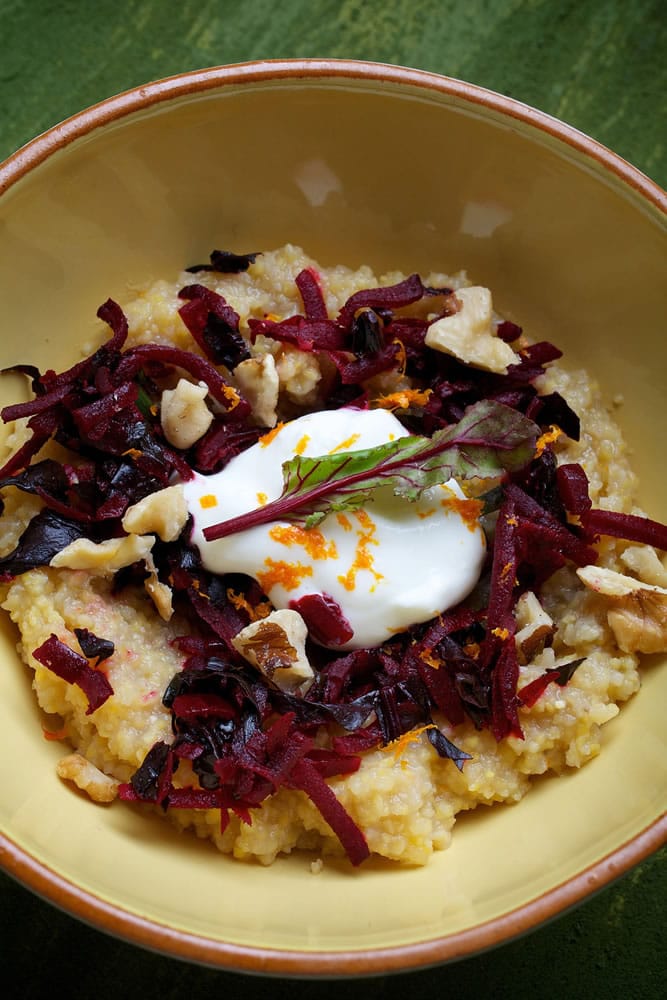We all want shortcuts, but in the kitchen we don’t want to taste them. The goal, especially when company is involved, is food that seems as if it took more trouble – and time – than it did.
This trick is easier to pull off in the summer, when you can fall back on a gazpacho or other raw (or mostly raw) treatment that doesn’t even heat up the kitchen. But in the winter, some of my favorite ingredients – root vegetables, whole grains – are ones that seem to require the most time to pull out their comforting goodness.
The key phrase is “seem to.” Because sometimes, once you learn a thing or two about various cooking methods, you can speed up the clock. One of my go-to pasta dishes, for instance, is penne with a butternut squash sauce you make by grating the vegetable and quickly sauteing it – in a fraction of the time it takes to roast. So when I was looking for something quick to do with another of my favorite vegetables for roasting, a beautiful bunch of beets from the farmers market, I pulled out the food processor and its grating disk.
In the blink of an eye, those scrubbed and trimmed beets were pulverized into beautiful shreds, perfect for cooking in a pan with a little water (the way Julia Child advocates in “The Way to Cook”) and my own way with seasonings, including chopped green olives for a little sharpness.



